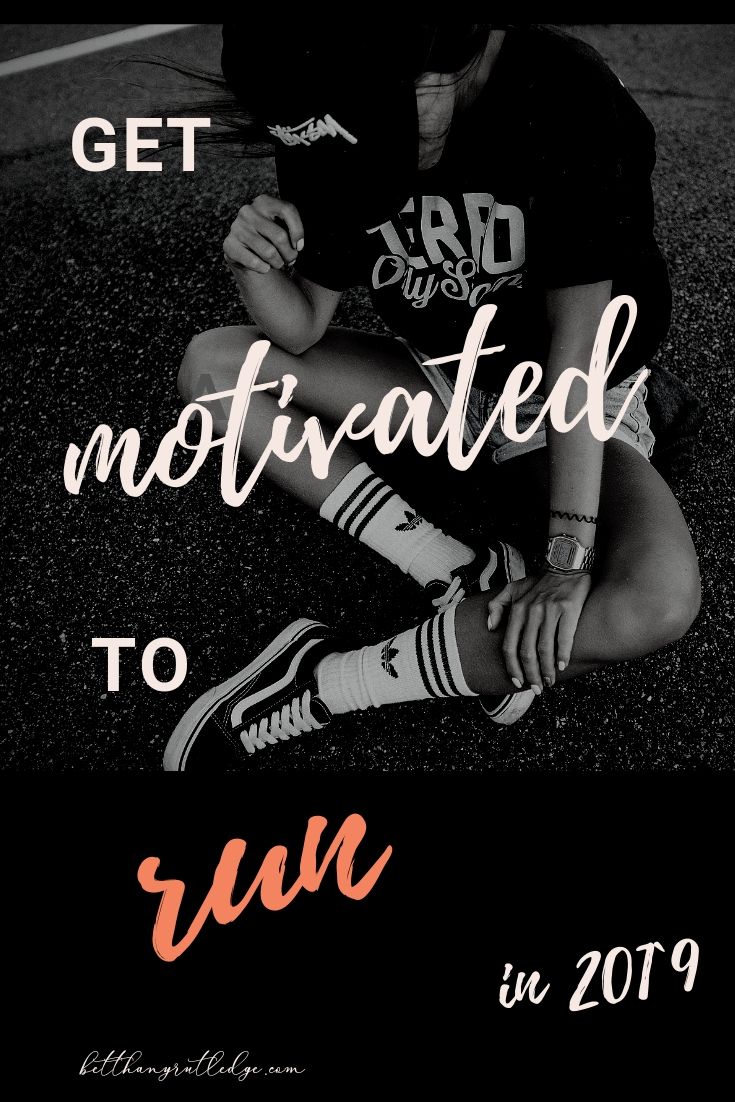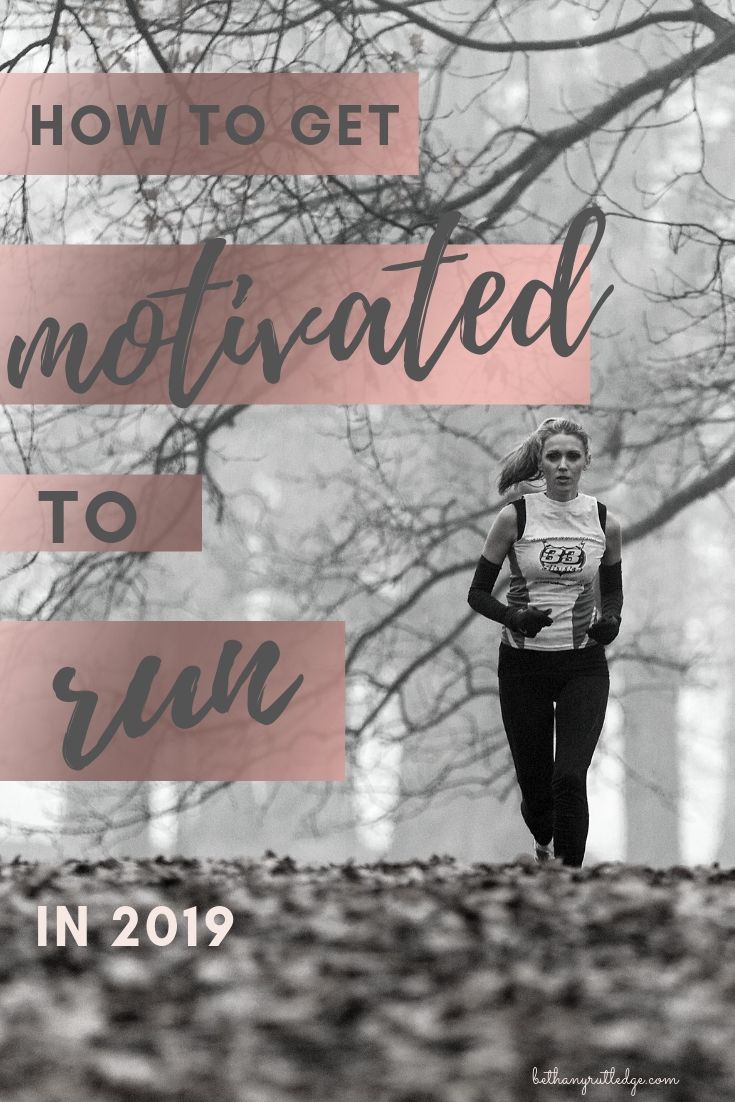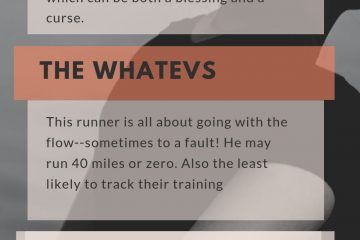Get (and stay) motivated to run in 2019

When I was younger, I went through intermittent spurts of running. I couldn’t seem to get motivated to run consistently. In fact, I dreaded every plodding step.
Why is it so hard to get motivated to run?
What was the problem? My nearly sole motivation for exercise was calorie burn. In high school, I was constantly trying to reduce weight so I could be a flyer (the person at the top of the stunt) instead of a backspot (the person who catches the person doing a stunt). Then, in college, I was endlessly battling the freshman fifteen, or, in my case, twenty.
Running seemed like the answer to these issues, so here and there, I’d dutifully strap on the very first Garmin GPS and proceed to suffer through thirty minutes of torture.
It wasn’t until nearly a decade later that I’d come to appreciate running for its own sake. And that’s when I began to see myself as a runner who (hopefully) runs for life, instead of of someone who just wants back in a smaller clothing size.
So what’s the big secret to start and stay running?
Start with a sustainable why, No matter what.
No really. That’s it.
What about you? Honestly. Do you run to look better? To feel better? Because your friends are doing it?
See: How to make running a habit.
What is your driving why?
If you’re not sure yet, let’s figure it out.
Certified Mental Performance Consultant Abby Keenan recommends listing your current motivations to help pin down your why.
If you’re unsure, examine your past motivations in sport or other activities. I’ll use myself as an example again. In high school and college, I stuck with cheerleading and pole vaulting primarily for social reasons.
To illustrate, here’s how a typical track practice went down: My childhood friend Chandra and I zoomed around campus in my red Saturn, practice poles stuck through both sides of the windows. Next, we stopped by Dunkin’ Donuts for a Coffee Coolatta and a six-pack of donuts. After all that, we’d practice. Sometimes.
What would Abby say about my past motivation? She would note my driving motives were external, and recommend finding internal motivation based on personal choice and inherent enjoyment.
Related: Grab the right gear to start running
What is internal motivation?
Abby describes internal motivation as “interest without consequences,” like enjoyment of an activity or the satisfaction of meeting a goal. Intrinsic motivation allows for better focus with less distraction, and leads to less stress when mistakes are made. Internal motivation leads to increased self-efficacy and confidence.
In comparison, extrinsic motivation includes material rewards or the approval of others. Athletes who are motivated extrinsically tend to focus more on performance or competition.

Here are some examples of external motivation:
● You’re motivated by getting a reward. For example, you race to get a really awesome finisher’s medal.
● You’re avoiding punishment. For instance, a physician tells you to lose weight or go on medication.
● You’re motivated by shame. For example, you exercise to burn calories or because you hate the way you look.
● You’re motivated by guilt. For example, you participate because you told a friend you would.
Some form of extrinsic motivation is always present, but it becomes a problem when the reward starts controlling your behavior. For example, you race because you feel like you should to meet the expectations of others.
Too much extrinsic motivation can also erode your intrinsic motives. For example, if your goal was to win, and you didn’t, you see the race as a waste.
Takeaway: Tap into your reasons for running. Often there will be an external, superficial why (look hot for summer!) and then an internal more private why (to prove that I’m not a quitter!).
Think about your sources of intrinsic and extrinsic motivation and pick a few that stand up to the list below.
- List all your sources of motivation.
- Now pare down to the BIGGEST reasons (2-4).
- For each, identify as extrinsic or intrinsic.
- Is this source likely to be motivational over a long period of time?
- Is this source of motivation healthy?
Related: How to start running from scratch
My Changing Run Motivation Why
After John and I got hooked on the sport in 2009, it wasn’t all roses and champagne. There were ups and downs, twists and turns. My why changed over time along with life.
At first, I craved accomplishment and excitement. I inherently enjoyed competing with myself, striving to reach goals that seemed impossible. Triathlon was a stream of endless dopamine hits with every session checked off and every PR reached. Endurance sports helped me achieve a flow state and took the edge off my type A personality.
From an extrinsic perspective, I enjoyed competing against others. But over the next few years, external rewards began to play a greater role, and eroded my inherent enjoyment of the sport. I was like the rat pushing the lever in the Skinner Box— sometimes the push would lead to a reward (a good race), but other times I was left unsatisfied.
Eventually, even if I performed well, it felt hollow and unsatisfying. Instead of being happy with success, I focused on areas where I was lacking. I never—not even one time—finished a race and thought, “I am proud of how I did.” Even if I won, I would secretly think “it was only so-and-so didn’t show up” or “everyone else was tired from training.”
Over time, I invested in coaching others over my own personal performances. This happened gradually and organically. Seeing others succeed was a satisfying, sustainable reward. And seeing lives change in ways beyond a finish line was a greater reward still.
My original why—the pursuit of an impossible challenge—wasn’t gone. I sought that experience in other areas of life. In a roundabout way, that’s how I came to write Courage to Tri.

Hi, I’m Bethany–coach, author of Courage to Tri, 2x Kona qualifier, and twin mom. I believe if you have a body you’re an athlete. Grab my free 5k plan to start your own athletic journey.
Now it’s your turn
Have you ever had a why that started as one thing and morphed into another? How do you get and stay motivated to run? I’d love to hear! Please leave me a comment below.
Free guide: cross your first finish line in 2019
P.S. If you’re still having trouble getting motivated to run, then check out this video!
Next up: 5 ways to really improve your running.
Other ideas for your fitness journey:
- How to start running at age 40,50, 60 and beyond
- Protected: Training notes for your first sprint triathlon
- Conquering Triathlon Swimming Training
- What is the worst new runner mistake?
- Ultimate guide to planning your first sprint triathlon
Essential Running Gear
What you need: Not much! Shoes, (non-cotton) clothing, and a smile.
1. Invest in a good pair of running shoes from a specialty running store. That doesn’t mean the shoes your friend recommends but the shoes that fit your gait and your unique foot shape. Start at a specialty running store where the experts can evaluate your foot strike and recommend a shoe ($65-$125.)
2. Some socks that won’t kill your feet. I’ve worn these for fourteen IRONMAN races and counting.
3. If you invest in any other clothing, get the perfect tank to start your running adventure. Personally, I recommend Lululemon. Their stuff is lightweight, wicking, and lasts forever.
Like this idea? Pin it!




1 Comment
Your top ten questions about how to start running — Bethany Rutledge · May 7, 2019 at 12:37 pm
[…] Read More: The #1 way to get motivated (and stick to) running […]
Comments are closed.